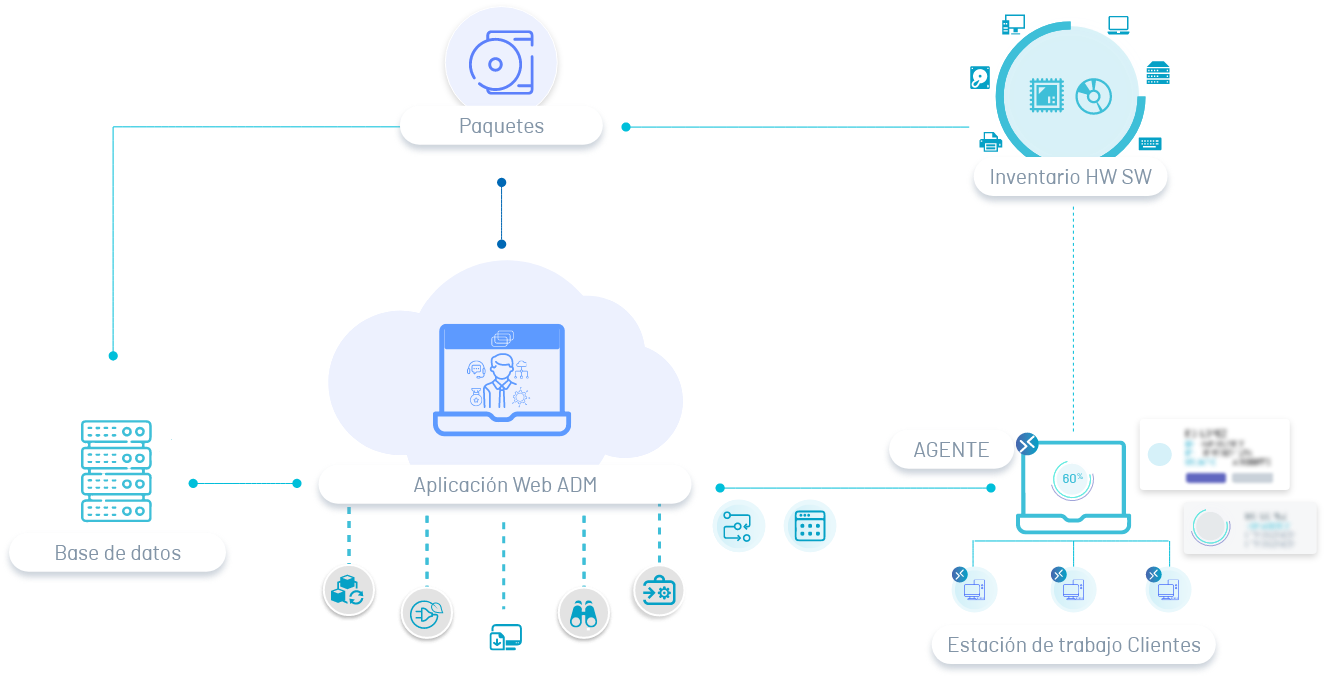Inventory management in ADM is a process that contributes to reducing hardware loss, by permanently controlling the use of resources and obtaining the relevant information of your assets with a single agent installed on each workstation. This process is carried out in several stages:

1. Initial Setup
A preliminary stage that describes the suggested path for installing and configuring the components required for ADM operation.
For more information, see the Initial ADM ↪ Setup.
2. Obtaining Asset Inventory
Devices in the organization with ADM agent installed report the information found from hardware and software inventories. Obtaining inventories it is activated in different instances where the ADM agent initiates device discovery.
3. Transmit Inventories in Packages
Discovered inventories are transmitted as data packets between the agents installed on the managed devices and the server. The server processes these inventories by taking automatic actions according to different values and the business rules entered by the user; In addition, it feeds the visible history of events for each machine.
Hardware and software inventory packages maintain a Storage type, allowed size and special features.
4. Inventory Management in Console
From the Home view of the ADM management console, you can consult all the information of the inventory files generated by the agents and use the different tools for monitoring and diagnosing the devices, which allow you to know the integral status of the equipment (hardware and software components).
In inventory management, you can also execute various remote actions on inventoried devices and take remote control of the device to generate more specific changes.
Catálogo de Software y Reglas
The inventory management process uses cross-cutting elements to unify the information inventoried through a Software Catalog and to automate recurring processes through Business Rules.


